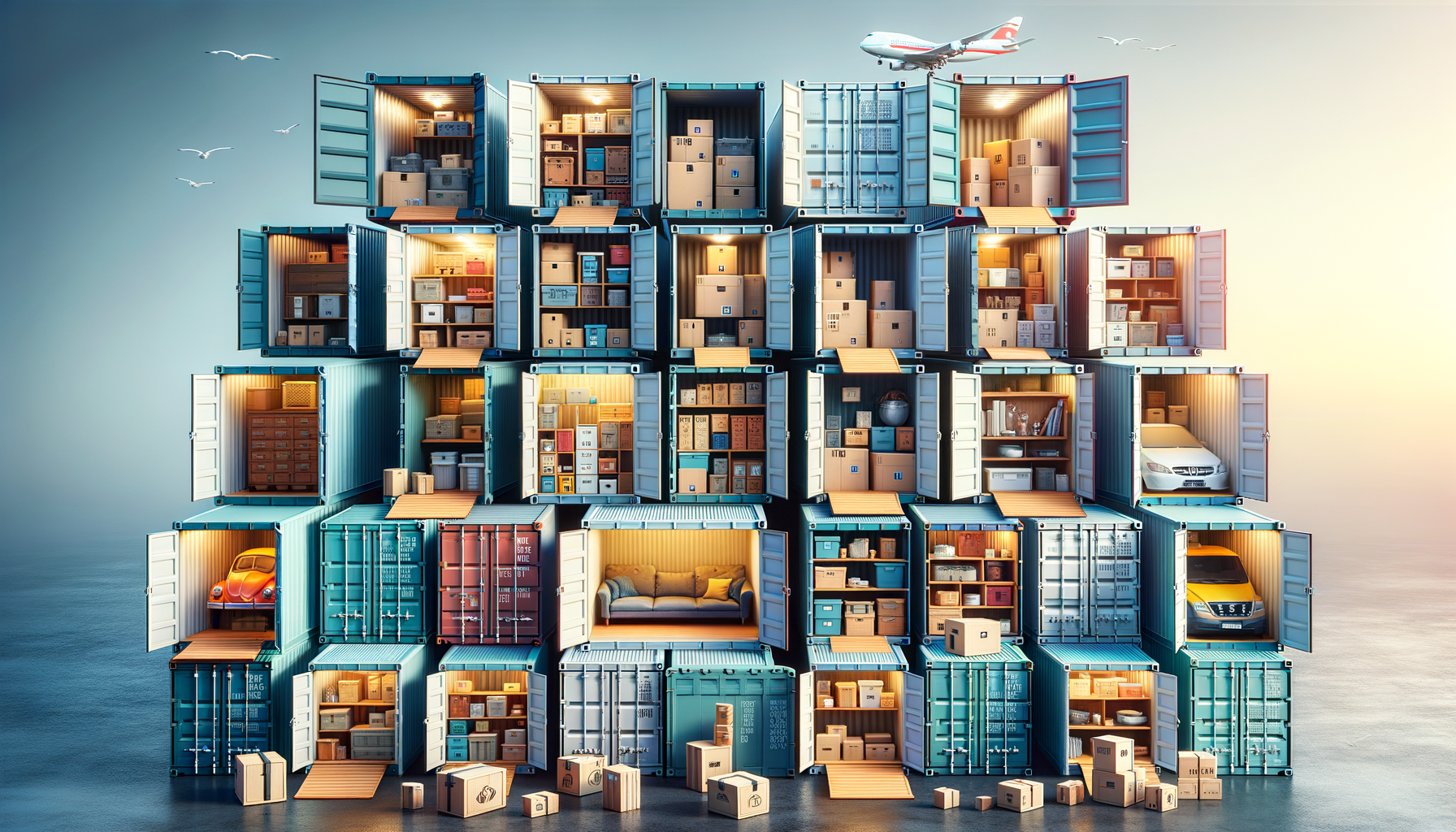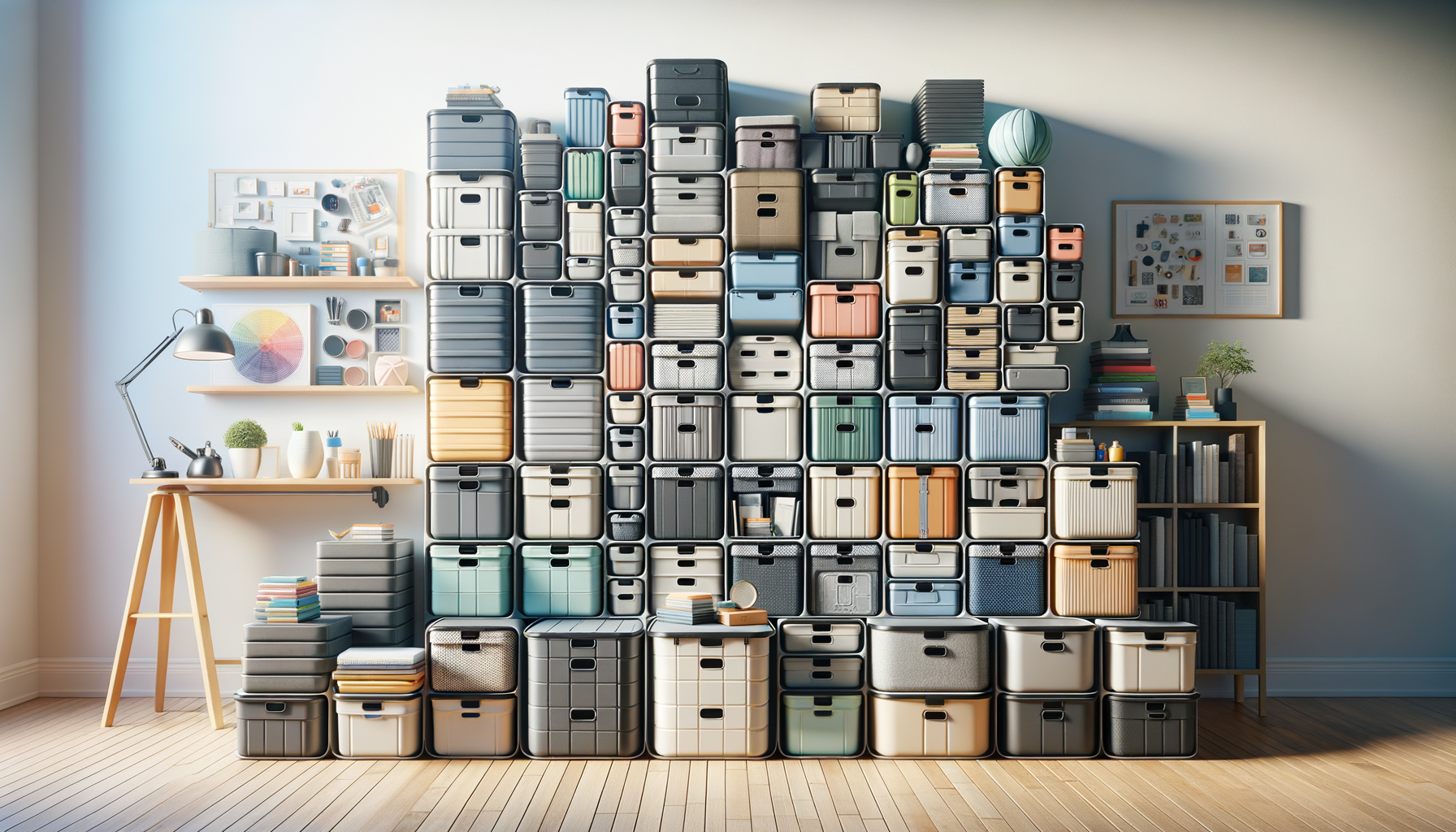
Unlocking the Potential of Storage Containers
The Versatility of Storage Containers
Storage containers have become an integral part of both personal and professional spaces, offering versatile solutions for organizing, transporting, and protecting items. Their flexibility allows them to be used in a myriad of ways, adapting to the needs of different environments. From small-scale home uses to large industrial applications, storage containers prove to be invaluable assets.
In the household, storage containers help in decluttering spaces, keeping items neatly arranged and accessible. They come in a variety of sizes and materials, such as plastic, metal, or glass, catering to different storage needs. For instance, airtight containers are excellent for preserving food, while stackable boxes are ideal for storing seasonal clothing or decorations.
In the industrial sector, storage containers play a crucial role in logistics and supply chain management. They are used for transporting goods across long distances, ensuring that products remain intact and secure. The durable construction of these containers makes them suitable for withstanding harsh weather conditions and rough handling during transit.
Moreover, storage containers have found innovative uses in construction and architecture. Repurposing shipping containers into affordable housing and office spaces is a growing trend, highlighting their structural strength and adaptability. This creative approach not only addresses housing shortages but also promotes sustainable building practices.
Choosing the Right Storage Container
Selecting the appropriate storage container involves considering various factors such as size, material, and purpose. Each type of container offers unique benefits, making it essential to match the container to the specific needs of the user.
For household use, plastic storage containers are popular due to their lightweight nature and affordability. They are available in a range of colors and sizes, making them suitable for organizing everything from pantry items to children’s toys. However, for storing perishable goods, glass containers are preferred as they do not absorb odors and are easy to clean.
In contrast, metal containers are often used in industrial settings due to their robustness and ability to handle heavy loads. They are ideal for storing tools, machinery parts, and other equipment that require secure storage. Metal containers are also fire-resistant, adding an extra layer of protection for valuable items.
When it comes to choosing containers for transport, the focus shifts to durability and security. Shipping containers, for instance, are designed to withstand the rigors of ocean travel, protecting goods from moisture and physical damage. Their standardized sizes also facilitate efficient stacking and transportation.
Innovative Uses of Storage Containers
Beyond their conventional uses, storage containers have inspired innovative applications across various fields. One such use is in the realm of sustainable architecture, where shipping containers are transformed into eco-friendly homes and offices. This approach not only reduces waste but also offers a cost-effective solution to housing shortages.
In the event industry, storage containers are being repurposed as mobile event spaces. Their sturdy construction and ease of transport make them ideal for setting up temporary venues for concerts, exhibitions, and pop-up shops. These container-based structures can be customized to include amenities such as lighting, seating, and sound systems, providing a unique and flexible event solution.
Furthermore, storage containers are being utilized in disaster relief efforts. Their durable design and portability make them suitable for transporting emergency supplies to affected areas. Once on-site, they can be converted into temporary shelters, medical clinics, or command centers, offering immediate support to communities in need.
These innovative uses of storage containers demonstrate their potential to address a variety of challenges, from environmental sustainability to emergency response. As technology and creativity continue to evolve, the scope for using storage containers in new and exciting ways is bound to expand.
Environmental Impact of Storage Containers
Storage containers, particularly those made from durable materials like metal and plastic, have a considerable environmental impact. Understanding this impact is crucial for making informed decisions about their use and disposal.
On the positive side, repurposing shipping containers for architecture reduces the demand for new building materials, thus conserving natural resources. This practice also minimizes waste, as it gives containers a second life instead of ending up in landfills. Additionally, using containers in construction can lead to quicker build times and lower costs, making sustainable housing more accessible.
However, the production and disposal of plastic containers pose environmental challenges. Plastic manufacturing involves the use of fossil fuels and releases greenhouse gases, contributing to climate change. Moreover, plastic waste can take hundreds of years to decompose, leading to long-term pollution issues.
To mitigate these impacts, consumers and businesses are encouraged to adopt sustainable practices, such as recycling and choosing biodegradable or reusable containers. Innovations in material science are also paving the way for eco-friendly alternatives, such as containers made from recycled materials or those designed to be easily recyclable.
By considering the environmental implications of storage containers, we can make more responsible choices that support sustainability and reduce our ecological footprint.
Future Trends in Storage Container Use
The future of storage containers is set to be shaped by technological advancements and evolving consumer demands. As industries continue to innovate, storage solutions are expected to become more sophisticated, efficient, and environmentally friendly.
One emerging trend is the integration of smart technology into storage containers. This includes features such as temperature and humidity sensors, which help maintain optimal conditions for sensitive goods. Smart containers can also be equipped with GPS tracking, providing real-time location data and enhancing supply chain transparency.
Customization is another trend gaining traction, with containers being tailored to meet specific needs. Modular designs allow for easy reconfiguration, enabling users to adapt containers for different purposes. This flexibility is particularly valuable in industries like retail and logistics, where storage requirements can change rapidly.
Furthermore, the push towards sustainability is driving the development of eco-friendly storage solutions. This includes the use of sustainable materials and energy-efficient manufacturing processes, as well as designs that prioritize recyclability and reusability.
As these trends continue to evolve, storage containers are likely to play an even more significant role in our daily lives, offering innovative solutions that cater to the diverse needs of individuals and businesses alike.


